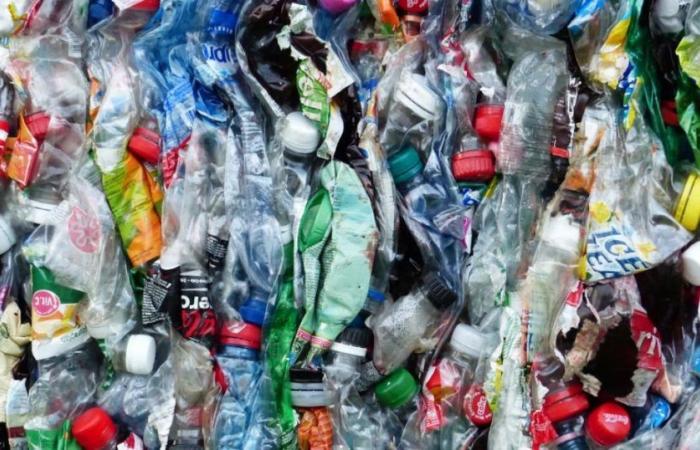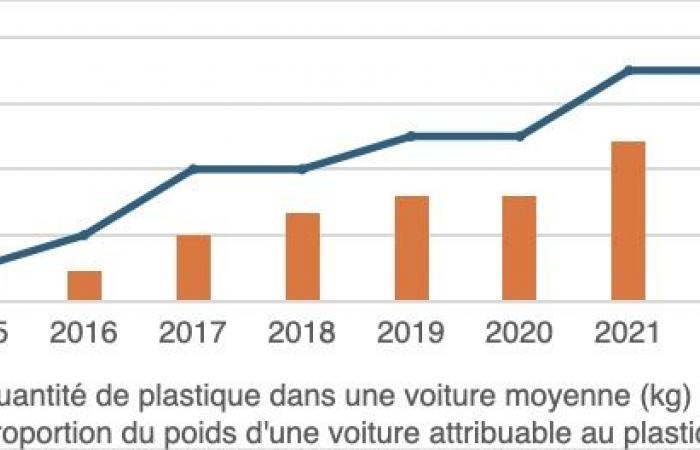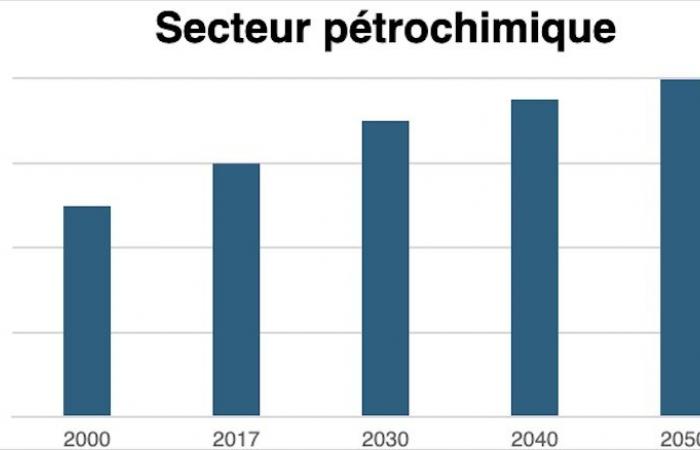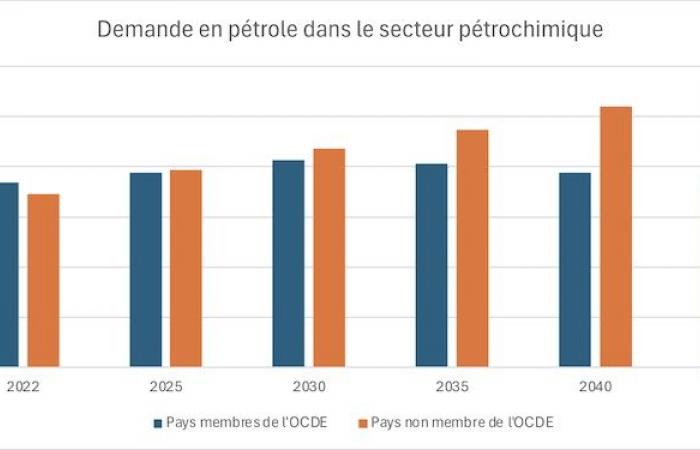Last April, the fourth meeting of the intergovernmental negotiating committee on plastic pollution took place in Ottawa. These negotiations are the result of a commitment made by the international community in 2022 to put in place, by the end of 2024, legally binding provisions to limit plastic pollution.
The countries, however, have not reached a consensus on production limits, and are due to meet again in November in South Korea. And several observers then blamed oil companies and their partners in the petrochemical industry for their efforts to block actions that would reduce plastic production.
From oil to plastic
Subscribe to our newsletter!
So you don’t miss any scientific news and know everything about our efforts to fight against fake news and disinformation!
More than 90% of plastic produced in the world is derived from oil, the World Economic Forum highlighted in 2016 in a report on the plastic economy. The chemical industry uses certain fractions of fossil fuels, including naphtha and liquefied natural gas, to produce substances considered high-value chemicals, as researchers at Lund University, Sweden, explain in 2023 , in an article on the petrochemical plastics industry.
As summarized by the International Energy Agency in 2018 in a report on the future of this sector, plastic is thus perfectly integrated into the fuel chain.
Source: Tilsted, JP et al. Ending fossil-based growth: confronting the political economy of petrochemical plastics. One Earth, 2023.
Less gasoline and more plastic?
Oil companies obviously anticipate, in the near future, a decline in their traditional market, that is to say that of energy and transport, and therefore want to diversify. Between 1966 and 2016, the use of plastic increased 20-fold and it is expected to double again by 2036, confirmed the World Economic Forum in 2016.
We must remember that plastic is everywhere. For example, in 2014, the average car contained 163 kg of plastic, according to a report published by the American Chemistry Council. This quantity had increased to 193 kg in 2023, i.e. 9.6% of the car’s weight.
Source: American Chemistry Council
However, the World Economic Forum considers that the main use of plastic is in packaging. According to Statistics Canada, plastic packaging constituted 30% of the total plastic production intended for Canadian consumption in 2020. The quantity of plastic used for packaging has also increased since 2012.
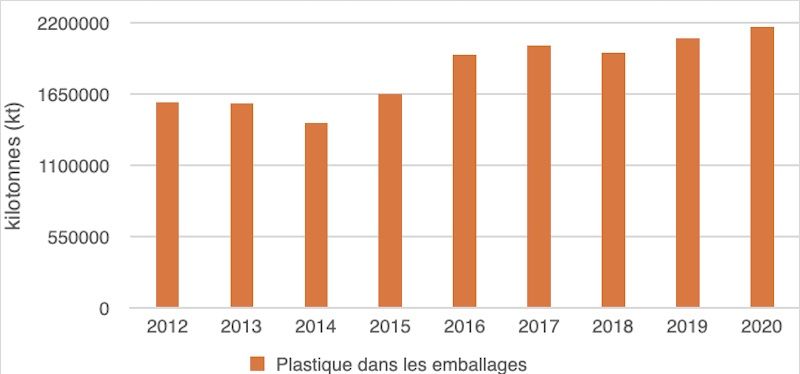
Source: Statistics Canada
A sector that increases demand for oil
Due to increased demand, global production of plastic (resins and synthetic fibers) increased from 2 million metric tons in 1950 to 380 million in 2015, American researchers had already calculated in an article published in 2017.
In the next decade, the petrochemical sector will become the main responsible for the growth in oil demand, Swedish scientists estimated. In 2000, petrochemicals were responsible for 10% of global oil demand. This proportion increased to 12% in 2017 and is expected to reach 15% in 2040, according to predictions from the International Energy Agency.
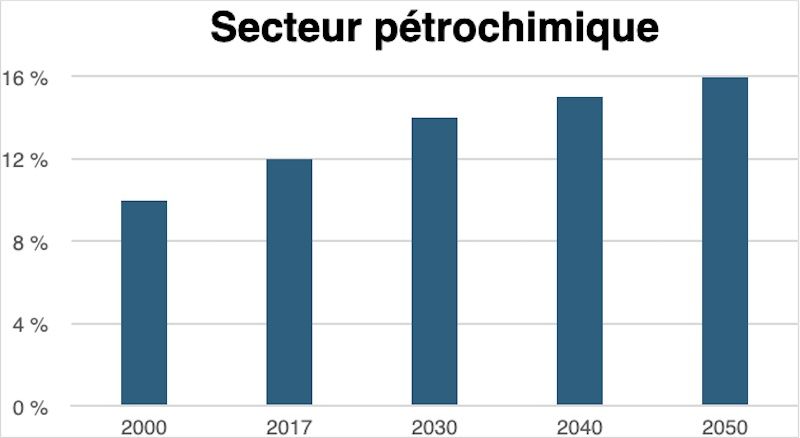
Source: International Energy Agency (https://iea.blob.core.windows.net/assets/bee4ef3a-8876-4566-98cf-7a130c013805/The_Future_of_Petrochemicals.pdf and https://www.iea.org/reports /world-energy-outlook-2018)
The increase in demand for oil by the petrochemical industry should even rest mainly on developing countries, according to forecasts from the Organization of the Petroleum Exporting Countries.
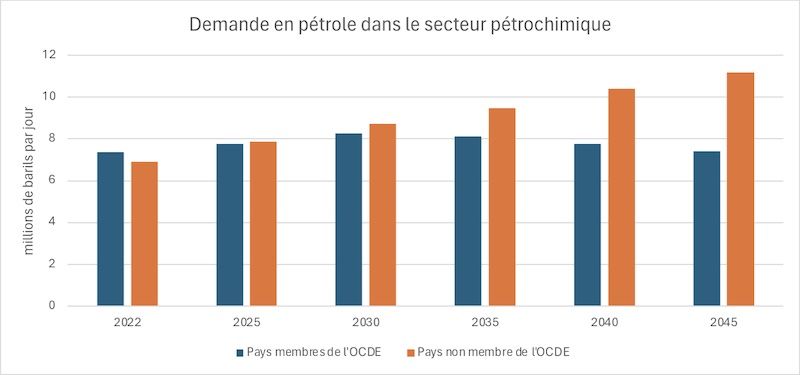
Source: Organization of the Petroleum Exporting Countries
Oil companies invest
It is therefore not surprising that oil companies are increasingly aiming to integrate the production chain of petrochemical products, the International Energy Agency already noted in 2018. For example, the oil company Saudi Aramco bought shares in the largest plastics company, SABIC, and the largest petrochemical company in India. As for the big players in the oil industry, Exxon Mobil, Shell, Chinese Siniopec and PetroChina, they are also big players in the petrochemical industry.
And the countries are themselves dependent on it: those called petrostates are also those which invest in petrochemical production, the Swedish researchers emphasized. These states began investing in the petrochemical industry in the 2000s and the trend continued in 2010 when the price of oil and natural gas declined. Which could explain their reluctance to regulate plastic pollution too harshly.
These governments present their investments in the petrochemical industry as a diversification strategy to protect themselves from the fragility of oil markets. Saudi Arabia now has one of the largest petrochemical capacities in the world.
Verdict
With the ongoing transition to energy sources other than oil and the expected decrease in revenues generated by this fuel, oil companies and even some oil states are investing more and more in plastic production and in the industry. petrochemical in general.

